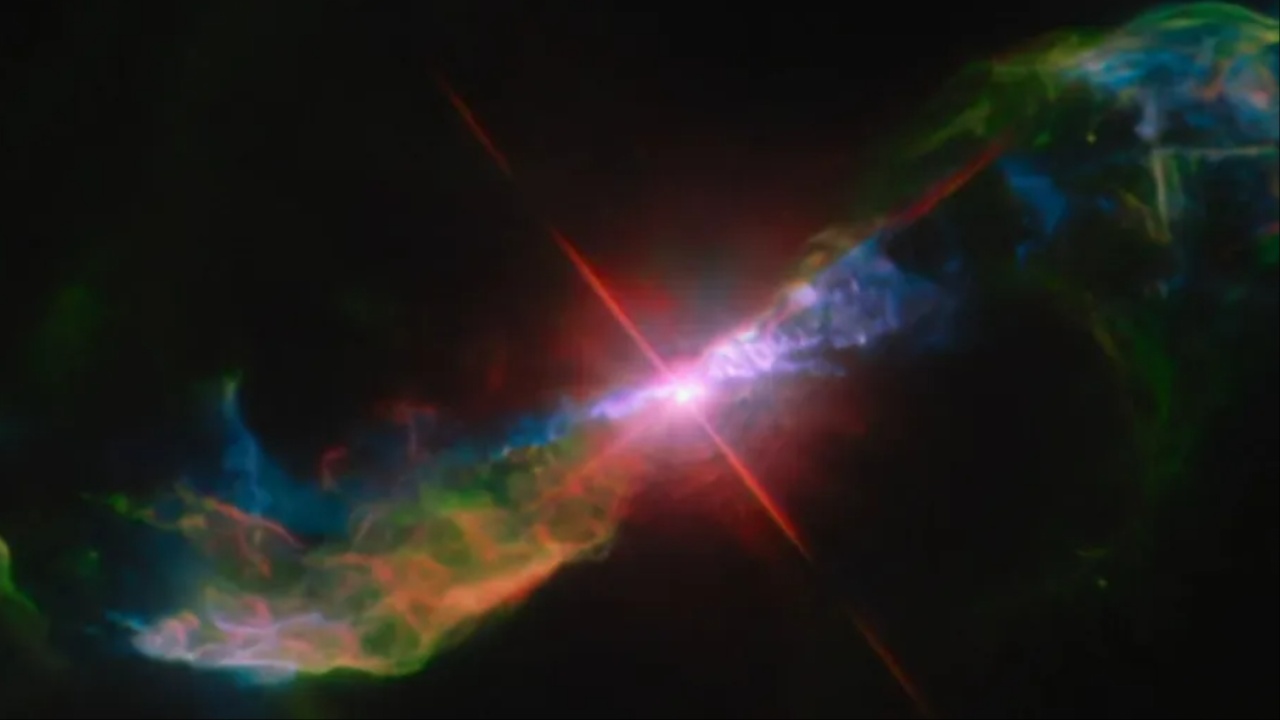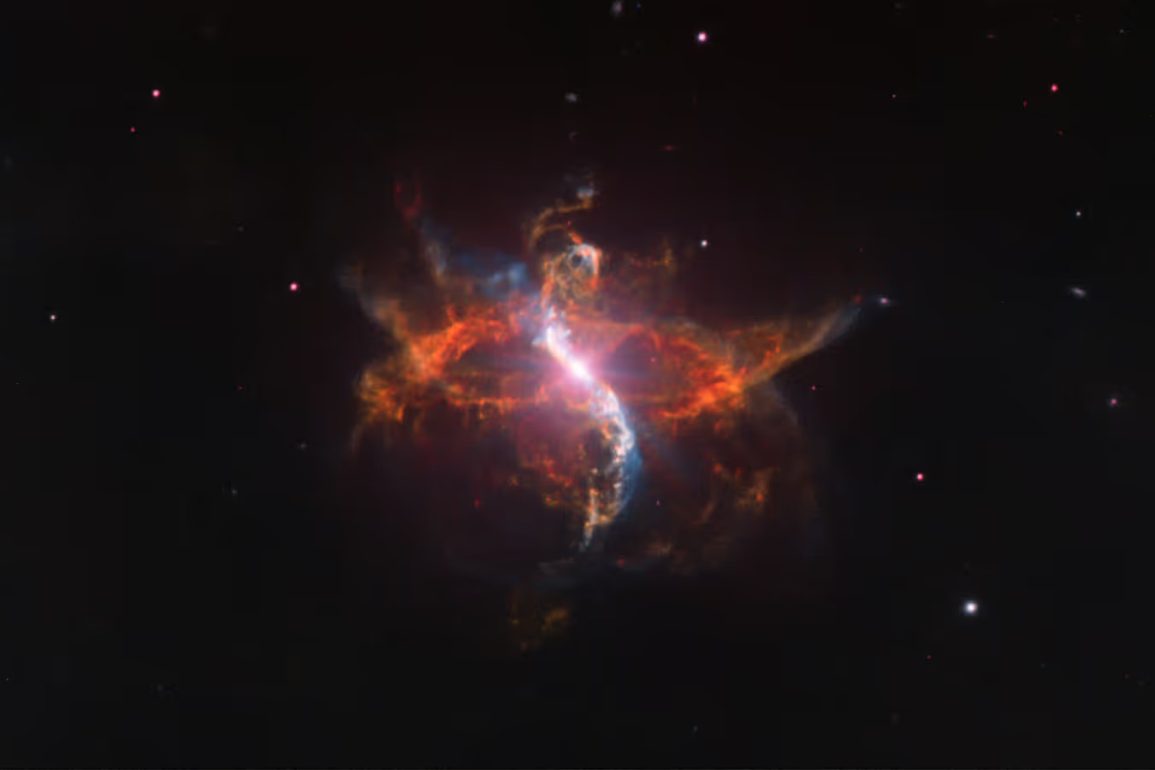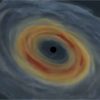The Hubble Space Telescope has produced an impressive image of the star system R Aquarii, showcasing the intricate and turbulent relationship between two stars that have been in close proximity for centuries. This striking portrait features an hourglass-shaped nebula formed by the dynamic interactions between a compact white dwarf and a massive aging red giant.
While the white dwarf remains relatively stable, the red giant has expanded to over 400 times the size of the Sun and exhibits a cyclical pattern of dimming and brightening every 387 Earth days.
Located about 710 light-years away in the constellation Aquarius, R Aquarii is classified as a symbiotic variable star system. This classification draws from the biological term “symbiosis,” reflecting the close coexistence of these two distinct stellar entities.
The white dwarf orbits the red giant every 44 years, drawing material from its companion’s outer layers. Occasionally, this interaction leads to explosive outbursts that are described as akin to a “gigantic hydrogen bomb,” as the material is funneled onto the surface of the white dwarf.

These explosive events eject twisted, geyser-like streams of glowing gas into space at astonishing speeds exceeding 1 million miles per hour. Such high velocities enable the expelled material to travel from Earth to the Moon in just 15 minutes.
This process illustrates the redistribution of nuclear energy within stars and plays a critical role in the formation of heavier elements like carbon, nitrogen, and oxygen, which are essential for the development of planets and life.
As one of the nearest symbiotic star systems to Earth, R Aquarii has been the focus of extensive studies using both ground-based and space telescopes. Since Hubble’s launch in 1990, it has monitored this system, with the Chandra X-ray Observatory beginning its observations a decade later.
These studies have examined changes in X-ray emissions, particularly from the nebula’s knotted jet, leading to the conclusion that the last significant eruption from the white dwarf likely occurred in the late 1970s, with the next potential explosion expected no sooner than the 2470s.
Recent observations from Hubble have revealed that the ejected material from R Aquarii has formed a spiral pattern, influenced by the force of the explosion and powerful magnetic fields. Astronomers compiled a timelapse video from five Hubble images captured over the past decade, highlighting the red giant’s brightness fluctuations and the dramatic evolution of the surrounding nebula.
Remarkably, the emitted material has been traced out to at least 248 billion miles from the star, an impressive distance that is 24 times the diameter of our solar system, showcasing the vastness and complexity of this stellar phenomenon.

